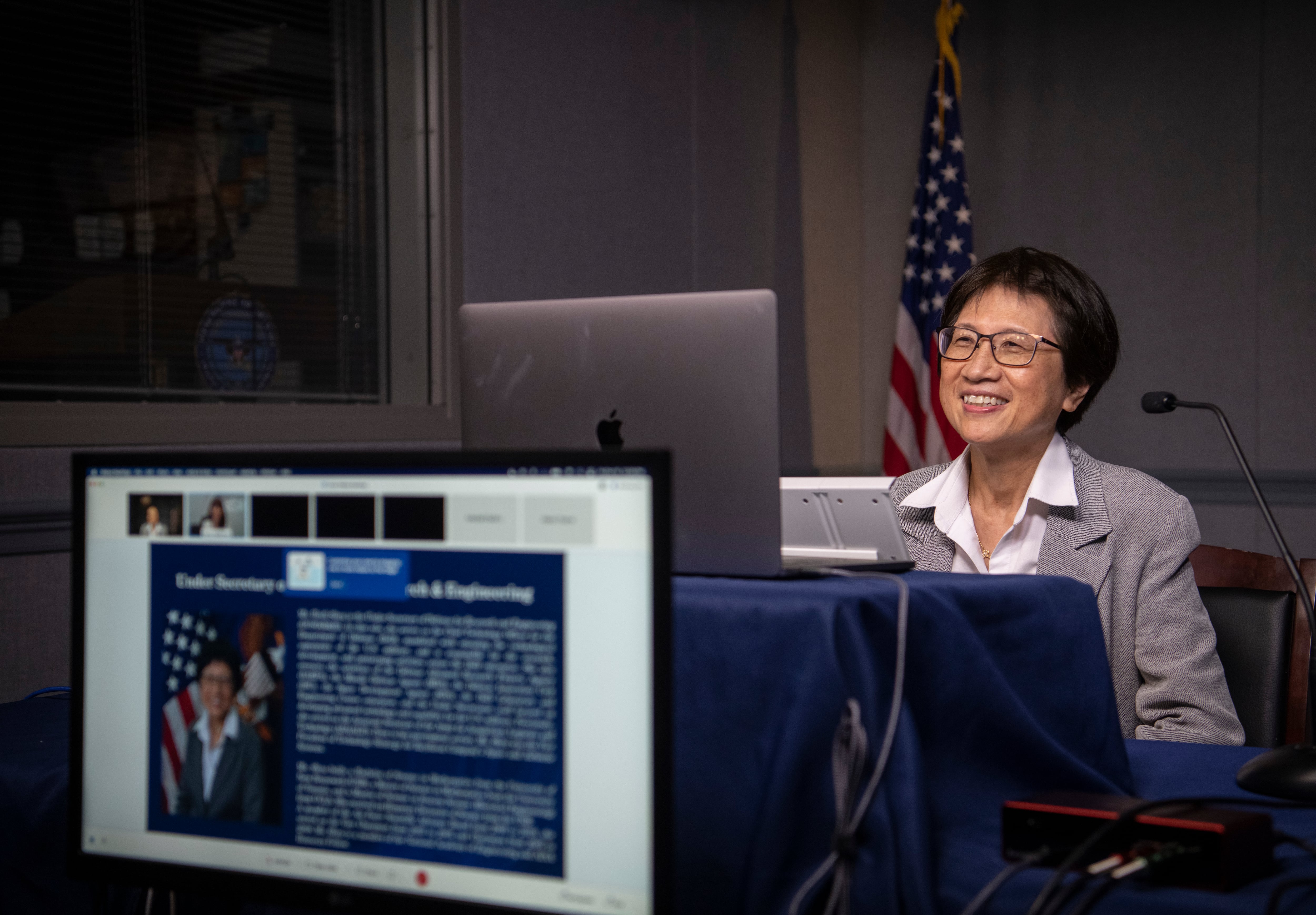WASHINGTON ― Deputy Defense Secretary Kathleen Hicks voiced concerns Tuesday that a “substantial decline” in competition in the defense-industrial base, particularly around small businesses, will complicate the Pentagon’s efforts to capture innovation and value for taxpayers.
“We’re down to about five prime contractors, a substantial decline over the years on the small business side in the defense-industrial base,” Hicks told reporters, following an industry roundtable the day before at the National Defense University.
“We know in the American economy that innovation largely occurs in that small business community. It’s a huge driver of innovation. So we know we face a problem there. So competition can get us better results. Competition, we believe, will help us manage cost effectively [and] get the best value for the taxpayer.”
These are familiar themes for Hicks, who previously acknowledged the U.S. defense-industrial base shrank by more than 40% over the past decade. She warned that if the trend continues, the country could lose an additional 15,000 suppliers over the next decade. During Hicks’ confirmation last year, she voiced concerns about consolidation and said competition is needed to maintain an edge over China and Russia.
Last week, Hicks visited Silicon Valley to discuss the Pentagon’s innovation priorities with small businesses in the space sector and academic researchers. Then on Monday, she participated in a roundtable, hosted by Business Executives for National Security, involving more than 130 defense-industrial base executives from large and small businesses.
And on Tuesday, Hicks said she had heard from companies about bureaucratic barriers to working with the Defense Department and acknowledged small business set-aside contracts must be better enforced by the department’s acquisition workforce.
RELATED

Along similar lines, the Pentagon plans to launch a new website next week that maps its innovation ecosystem to show businesses how to access the department, Hicks said.
“If you’re a prime, you know how to do that. If you’re a small company that works in commercial space who’s never worked with DoD before, the idea is to lower those barriers and explain who should you contact,” she said.
The Pentagon is expected to unveil an updated small business strategy this spring.
As the incoming undersecretary for acquisition and sustainment, Bill LaPlante, joins the DoD next week, Hicks said she anticipates a good partnership with Under Secretary for Research and Engineering Heidi Shyu and Vice Chairman of the Joint Chiefs of Staff Adm. Chris Grady so the military can realize new warfighting concepts.
Republicans and some centrist Democrats have criticized the budget’s assumed inflation rate of 2.2%, arguing the defense budget top line should be higher than the $813 billion the administration is seeking for national defense. The fiscal 2023 budget is $30 billion, or 4%, over the $783 billion Congress appropriated for this fiscal year.
As a practical matter, Hicks said the department isn’t hearing “a huge influx” of requests for equitable adjustments to contracts from the defense industry in response to rising inflation rates. Meanwhile, the DoD is tracking fluctuations in those rates.
“We’re always in conversations around equitable adjustments. We have not seen a huge influx of those,” Hicks said. “We have to be both looking out [to ensure] we have a good contract base that wants to work with us, but also, again, looking out for taxpayers so that we’re not locking in rates, for example, that don’t make sense to lock in today for long-term contracts.”
Facing questions about how the U.S. military will replenish stocks of weapons it’s sending to Ukraine to fight Russia, Hicks said she is set to meet with Raytheon Technologies’ chief executive, Gregory Hayes, later in the day to discuss the matter.
She also plans to participate in a classified roundtable with other defense CEOs on Wednesday to discuss “what can we do to help them, what do they need to generate supply.”
A Raytheon-Lockheed Martin joint venture makes Javelin anti-tank missiles, while Raytheon produces Stinger anti-aircraft missiles. The Stingers are in low-rate production and are facing obsolescence, though Hicks did not mention them by name or describe potential hurdles in detail.
“I’m sure you already know in some specific munitions areas we know we have some obsolescence issues,” Hicks said. “But we have seen, very patriotically, members of industry lean forward and indicate their willingness to work together.”
Hicks said the the Biden administration is in a “continuing dialogue” with Ukrainian officials over the types of weapons it plans to send, and that presidential decisions on the matter were pending.
“Yes, we will continue to look at the type of capabilities that the Ukrainians are asking for in terms of how to give them more range and distance,” Hicks said.
While Ukraine is a priority, Hicks said, the process could reveal broader supply chain vulnerabilities that must be remedied, primarily to maintain supplies for the U.S. military.
Amid complaints from lawmakers that the Pentagon is trailing Russia and China in hypersonic weapons, Hicks said that government needs to embrace a less risk-averse approach. Congress, in an federal spending package weeks ago, cut funding for the what was thought to be the department’s leading effort — the Air Force’s AGM-183A Air-Launched Rapid Response Weapon, made by Lockheed.
The U.S. used to lead with a test-fail approach to innovation, but not so much now, Hicks said. She wants the Pentagon’s efforts to gain more trust from lawmakers.
“What we see in general is a real resistance to that approach and concern over whether the U.S. investments are making a difference, up on Capitol Hill, and so you get curtailment programs, you get concerns over concurrency,” she said. “These are technologically risky approaches sometimes, and we have to be willing to fail. I think this is a place where we want to increase the trust that Congress has in the department.”
Joe Gould was the senior Pentagon reporter for Defense News, covering the intersection of national security policy, politics and the defense industry. He had previously served as Congress reporter.





